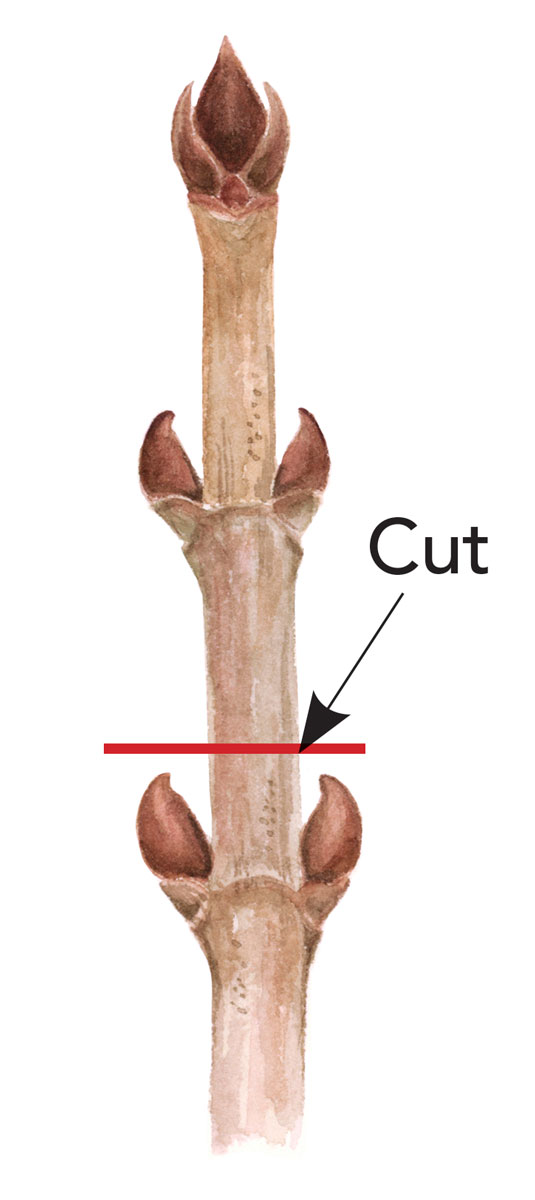
Assemble a Pruning Tool Kit
Having the right equipment will help to ensure pruning success. Here are the basic tools to get the job done right.
Tools for your kit
1. Safety glasses are an essential part of any pruning kit. Safety glasses rated for pruning work are labeled “Z87” or “Z87+”.
2. Leather gloves are the best option for protecting your hands against cuts from pruning tools.
3. Bypass pruners should be sharp, clean, and well-lubricated.
4. A full-size pruning saw with a hardened steel blade will be your go-to tool for many cuts.
5. A bonsai saw is optional, but very useful for making finer cuts in tight spaces.
Essential Pruning Vocabulary
Before you reach for your tools, take a moment to review these common pruning terms and definitions.
Three Types of Pruning Cuts
1. A reduction cut shortens a branch through cutting a larger-diameter stem back to a smaller-diameter stem at the branch collar. This cut can be used to take the weight off the end of an overextended branch, making it less susceptible to breakage.
2. A thinning cut removes an entire branch at its base. These cuts allow more light to penetrate the plant’s canopy and encourage the growth of interior branches.
3. A heading cut shortens a branch by taking the end of the branch off just above a leaf node. This cut stimulates growth at the cut end of the branch and should be used very sparingly.
Tip: Cut heavier branches in three steps
Making a series of three cuts will prevent bark from tearing and wood from snapping or splitting while you are removing a large branch.
A. Start by making a ¼- to ½-inch-deep cut on the underside of the branch, about a foot out from where your final cut will be.
B. Make the second cut a few inches further out on the branch than the first. This will cause the end of the branch to fall away cleanly.
C. Make the third cut outside the branch collar or above a leaf node. It should go all the way through the branch.
Jen Kettell is an arborist and horticulturist and the owner of Radiant Leaf Consulting, a firm based in Nattik, Massachusetts, that provides training to green-industry professionals and homeowners.
Photos: Carol Collins. Illustrations: Jessica Daigle























Comments
Log in or create an account to post a comment.
Sign up Log in